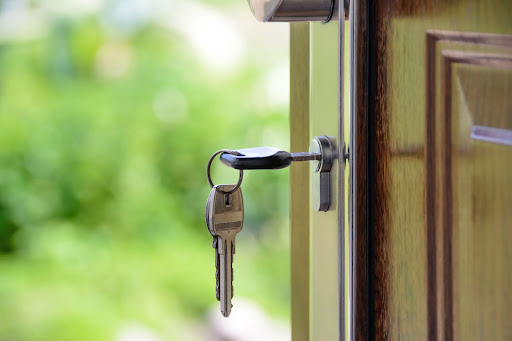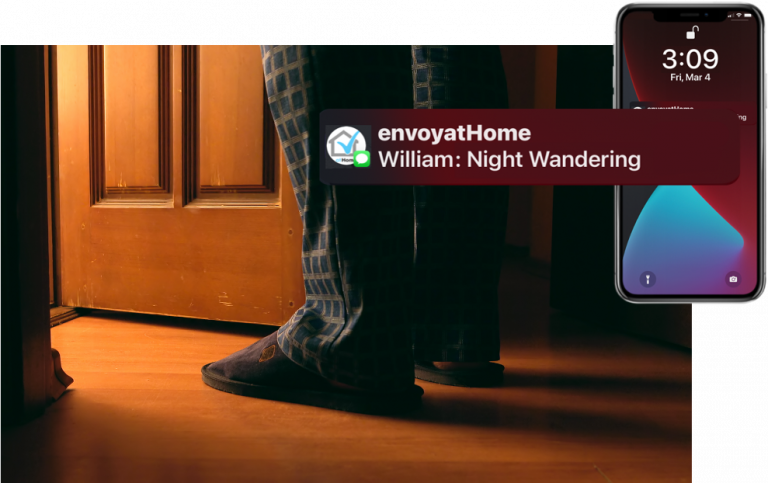As a family caregiver, no doubt you’ve experienced the immense caregiver stress that comes with caring for an aging parent from a distance. You want to ensure their safety, well-being, and dignity, but care can be overwhelming and expensive. With most older adults wanting to age in place, and with some experiencing the added challenge of memory loss or dementia, it can feel like an impossible task. But not with a home monitoring system for the elderly.
The Challenges of Long Distance Care that Factor in to Caregiver Stress
According to the National Council on Aging, caregiver stress can have devastating effects on not just our emotional but our physical health as well. Overwhelmed long distance caregiver stress can escalate to cause serious health issues which can only be diagnosed and treated by a licensed physician. Most doctors use the Zarit Burden Interview (ZBI) to measure caregiver stress. You can learn more about the ZBI from the Wisconsin Alzheimer’s Institute.
Navigating the journey of long-distance care for an aging loved one introduces unique challenges that can significantly contribute to caregiver stress. When miles separate you from your parent or relative, the constant worry about their health, safety, and overall well-being can be relentless. One of the most daunting aspects is the limited visibility into their daily lives. Without being there in person, it’s difficult to assess their true condition, recognize subtle changes in their cognitive state, or even feel confident that they follow through with doctors’ orders and medications. This lack of firsthand observation feeds into a cycle of worry and concern, making the caregiver feel helpless and even guilty for not being physically present.
Moreover, coordinating care from a distance adds layers of complexity to an already challenging situation. The logistics of managing healthcare appointments, home maintenance, and emergency interventions from afar require an immense amount of time, effort, and coordination. This logistical nightmare, combined with the emotional toll of seeing a loved one age, can significantly add to caregiver stress factors. These stressors not only affect the caregiver’s mental and emotional health but can strain family dynamics as well, as decisions and responsibilities become sources of tension. In essence, long-distance caregiving puts a spotlight on the emotional and logistical hurdles that families must navigate, making the search for caregiver-focused solutions more critical than ever.
Technology can help. But not all technology was created for you, the caregiver.
Older Adults’ Resistance to Privacy-Invading Tech
In the quest to lower the number of caregiver stress factors relative to the safety and well-being of our aging loved ones, technology has often been viewed as a saving grace. However, not all technology has been designed with the specific needs of caregivers and seniors in mind.
Cameras, for example, have been repurposed as caregiving tools, offering a semblance of oversight and peace of mind. Yet, the reality is that such measures often yield mixed results. The idea of constant surveillance might offer a caregiver reassurance, but it’s far from practical – who can watch a camera feed all the time? More critically, it clashes with older adults’ deeply held values of privacy and autonomy.
Most older adults are vehemently opposed to what they perceive as an invasion of their private lives. The thought of being monitored in their most intimate spaces—their homes—strikes at the core of their independence. And let’s consider the logistics; the most common sites of accidents, the bathroom and bedroom, are precisely the places where cameras are least likely to be installed due to privacy concerns.
This resistance is not just about a generational divide in comfort with technology but a fundamental issue of dignity and respect. A home monitoring system for the elderly works without intrusive cameras or listening devices.
The Limitations of Emergency Buttons and Pendants
The decision to equip an older adult with an emergency button or pendant is often made with the best intentions, aiming to empower an individual with immediate access to help should they need it. However, this solution may inadvertently contribute as a caregiver stress factor through unrealistic expectations, as it can create a false sense of security. While these devices have the potential to be life-saving when activated, their effectiveness is heavily contingent on their proximity to the user during an emergency. The reality is that older adults don’t always wear their device. Whether due to discomfort, forgetfulness, or a sense of invulnerability, these emergency tools can often end up left on the night table rather than on the person they’re meant to protect.
This challenge is compounded for individuals experiencing mild cognitive impairment, memory loss, dementia, or who may be naturally forgetful. The daily responsibility to charge, wear, or remember to carry their device can become an insurmountable hurdle, significantly reducing the device’s potential to provide timely assistance. Moreover, in the chaos of an emergency—where an older adult may be injured, overwhelmed, frightened, or disoriented—the expectation that they will have the presence of mind to activate the device is optimistic at best.
This gap between the theoretical benefits of emergency buttons and pendants and their practical limitations highlights the need for more reliable solutions to relieve long distance caregiver stress factors. The right home monitoring system for the elderly doesn’t require any engagement or interaction from the older adult, making them ideal for families concerned about compliance of wearable devices of any kind.
Introducing the Ultimate Solution – Home Monitoring Systems for the Elderly
In the complex world of caregiving, where emotional ties intersect with the practical needs for safety and well-being, the emergence of home monitoring system for the elderly products stand as a beacon of hope for long distance caregivers.
Unlike traditional emergency buttons and pendants that require active engagement and can be forgotten, an elderly monitoring system is always on, operating seamlessly without needing the older adult to remember to charge batteries or wear a device. This system transcends the limitations of other safety measures, offering a comprehensive view of an older adult’s activities without invading their privacy—a crucial aspect that sets it apart from conventional cameras. Its discreet nature ensures that dignity and independence are preserved, addressing the core values and concerns of both caregivers and seniors alike.
Designed specifically with caregivers in mind, this technology is not a makeshift solution repurposed from other uses. Instead, it’s a new technology aimed at easing a whole host of caregiver stress factors by providing real-time insights into the well-being of loved ones. The system’s ability to integrate with your cell phone means that no matter where you are, peace of mind is just a glance or text message away. This constant connectivity dramatically reduces the worry and uncertainty that often accompany long distance caregiving, ensuring you always know your loved one is safe and well.
It’s a testament to how modern technology can be both powerful and compassionate, embodying a solution that truly understands and addresses the multifaceted challenges of caregiving from afar.
Making the Right Choice for Your Family
In an ideal world, money would never factor into decisions about caring for our aging loved ones. However, with the steep price tag attached to home health aides and senior living facilities – expenses that can soar into thousands per week and are not covered by Medicare – families have no choice but to navigate the financial aspects of caregiving alongside their need to reduce caregiver stress factors. It’s a delicate balance, seeking solutions that honor our commitment to our loved ones without bankrupting our own retirements.
Thankfully, technology in 2024 presents reasonably priced options that can significantly ease the burden of long-distance caregiving. The senior monitor and home monitoring system for the elderly from envoyatHome transforms your cell phone into a powerful tool that can lower the number of your long distance caregiver stress factors by alerting you to behaviors that risk your loved one’s safety, wellness, and cognitive state – while they’re happening – so your loved one can get the kind of help they need when they need it. For less than $3 a day, envoyatHome’s system offers peace of mind that reduces caregiver stress factors AND is financially reasonable.
This system is not just about senior monitoring; it’s about staying connected in a way that respects the dignity and independence of your loved ones while providing you with information about your loved one’s risks, AS THEY ARE HAPPENING, so your loved one gets the help they need, when they need it. Making the right choice for your family means considering both the emotional and financial implications of caregiving. With envoyatHome, it’s possible to achieve a balance that nurtures the well-being of both the caregiver and the older adult, ensuring everyone’s needs are met in a respectful and financially savvy manner.
Learn more at www.envoyatHome.com today.



